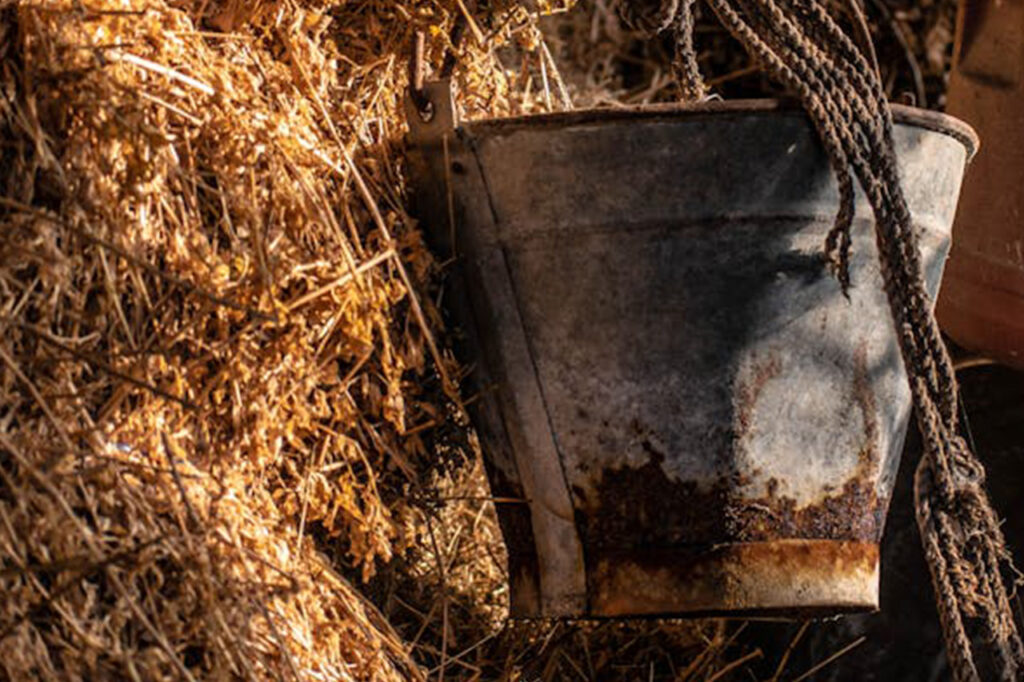They say that when building a property, the most important things to remember are location, location, and location.
Choosing the right location for a metal barn is one of the most critical decisions during the planning phase. The success of the construction and the functionality of the barn over time greatly depend on where it is built. An ideal site not only supports the structural integrity of the barn but also enhances its utility, longevity, and maintenance efficiency. Site selection is influenced by a range of factors including soil condition, drainage, access to utilities, proximity to other buildings, and local zoning laws.
Topography and Land Grading
A level and elevated site is typically considered the most suitable starting point for constructing a metal barn. Flat terrain simplifies layout planning, speeds up construction, and ensures long-term structural stability. Even though a perfectly flat site is desirable, a gentle slope can offer added benefits for natural water runoff. An area with higher elevation helps prevent issues related to flooding or standing water, both of which can deteriorate the barn’s foundation over time. Selecting a site that avoids valleys or low-lying areas reduces future maintenance concerns and enhances the building’s overall durability.
Before the actual building process begins, land grading may be necessary to create an even and stable base. Grading involves reshaping the ground to ensure proper drainage, minimize erosion, and eliminate problematic slopes or depressions. This foundational preparation helps reduce the chances of structural shifting and keeps moisture from seeping under the barn. Well-graded land not only extends the life of the barn but also contributes to better soil management around the site. Engineers or land surveyors can help determine the grading adjustments needed based on the natural contours of the property.
Soil Quality and Load Bearing Capacity
Soil composition is another critical factor when determining the ideal build site for a metal barn. Certain soil types, particularly those with a high clay content, can pose challenges. Clay expands when wet and contracts when dry, which may lead to cracking or shifting of the foundation over time. In contrast, sandy or gravelly soils usually provide more consistent drainage and are less likely to undergo significant volume changes with moisture. Stability in the soil ensures the barn maintains its structural integrity through changing weather and ground conditions.
To properly assess the soil’s suitability, a geotechnical test is often recommended. This test evaluates the load bearing capacity of the soil and its moisture retention properties. Information gathered from this test can inform decisions about foundation design and whether reinforcements such as deep piers or concrete footings are necessary. Without this assessment, builders risk placing the structure on a weak base that could require costly repairs later. Factoring in soil quality at the start of the project helps avoid long-term performance issues and protects the investment in the metal barn.
Drainage and Water Management
Water management is an essential consideration for preserving the longevity and safety of a metal barn. A site with natural drainage pathways that guide water away from the structure is highly beneficial. During site selection, observing how water behaves during rainfall is crucial for identifying potential problem spots. Drainage systems must be designed to keep water from pooling near the barn, which could lead to rust, corrosion, and damage to the lower sections of the building. These issues, if unaddressed, can accelerate wear and shorten the lifespan of the barn.
Supplementing the site with engineered drainage features can further improve water control. Swales, French drains, or culverts are commonly used to redirect runoff efficiently. The goal is to create a dry perimeter and stable soil conditions around the barn at all times. Over time, good drainage also helps in protecting any nearby landscaping, equipment, or livestock shelters. Ensuring the site does not retain water and drains efficiently will prevent the barn from becoming a breeding ground for pests, mold, or mildew. A properly drained site supports both structural health and operational safety.
Access and Transportation Considerations
Access is an important logistical factor when selecting a location for a metal barn. During construction, heavy machinery, trucks, and labor crews need to move in and out of the site with ease. If the access routes are narrow, unstable, or far from public roads, construction can become more complicated and expensive. After the barn is completed, ongoing use will likely involve regular trips for vehicles such as tractors, delivery trucks, or trailers. Ensuring the site can accommodate these vehicles makes operations smoother and reduces future upgrades.
Driveways and paths leading to the barn should be constructed from durable materials that can handle heavy loads. Gravel or compacted soil may suffice for smaller setups, but larger barns used for commercial or agricultural purposes might require paved access. Proximity to utilities, service providers, and emergency services also becomes more relevant as the barn’s usage increases. A location that supports easy movement and transportation contributes to efficiency in daily use and simplifies seasonal tasks like harvesting or storage.
Utility Connections and Services
The availability of essential utilities is another vital aspect of selecting the right build site for a metal barn. A barn intended for agricultural storage may need minimal utilities, but a workshop, office, or climate controlled space will require power, water, and possibly internet or sewage connections. The closer the site is to existing utility lines, the less expensive and time consuming it will be to extend those services to the barn. Evaluating these factors early on prevents budget surprises and allows for better planning.
In remote or off grid areas, alternative solutions may need to be implemented. Solar panels can power lighting and ventilation systems, while rainwater collection can provide water for irrigation or cleaning. Septic systems may be necessary for barns that include restroom facilities. These systems should be designed and installed before the barn is erected to avoid construction delays. Ensuring access to required utilities enhances the barn’s functionality and allows it to serve its intended purpose effectively over time.
Orientation and Sunlight Exposure
The positioning of the barn on the site determines how it interacts with environmental elements. An ideal orientation takes advantage of natural sunlight for lighting and heating while minimizing wind exposure. In colder climates, south facing entrances help in maximizing solar gain. In warmer regions, careful orientation can reduce cooling requirements. Natural light not only reduces energy consumption but also improves the working conditions inside the barn.
Proximity to Other Structures and Zoning Compliance
Building codes and local zoning laws may dictate how close a metal barn can be to other structures, property lines, or roads. Maintaining an appropriate distance ensures compliance with fire safety regulations and eases future expansions. It is also important to consider how the barn fits within the existing layout of the property. Adequate spacing allows for safe maneuvering of equipment and prevents overcrowding. Checking local ordinances and obtaining necessary permits is a step that should never be overlooked.
Environmental and Climatic Factors
Climate affects nearly every aspect of barn design and site planning. Wind speed, rainfall, snow load, and temperature fluctuations influence the choice of materials and structural reinforcements. The build site should ideally be sheltered from extreme weather using natural windbreaks like trees or terrain features. In flood prone areas, elevation becomes even more important. Being aware of regional weather patterns helps in selecting a location that minimizes exposure to natural hazards.
Cost Implications of Site Conditions
Site conditions have a direct impact on construction costs. A site requiring extensive grading, drainage improvements, or soil stabilization can significantly increase the budget. On the other hand, a well chosen site reduces the need for such interventions. Cost efficiency is not just about the initial outlay but also long term savings on maintenance and repairs. Choosing a build site that meets structural, logistical, and environmental requirements can result in a much more cost effective project.
Future Expansion and Adaptability
An ideal site should allow for potential future expansions or modifications. Planning for additional storage, animal housing, or workspaces can save time and resources later. A site with ample space and flexible layout options accommodates changing needs without requiring relocation. This forward thinking approach enhances the long term value and functionality of the metal barn.
Security and Privacy
Security considerations are also important when selecting a site. A location that offers some degree of seclusion can deter theft and unauthorized access. At the same time, it should not be so remote that it becomes difficult to monitor or access in emergencies. The addition of fencing, lighting, and surveillance can be planned more effectively when the site layout supports these features. Privacy also contributes to a safer and more productive environment.
Legal and Environmental Compliance
Environmental impact assessments may be required depending on the location and size of the barn. Wetlands, protected habitats, or heritage zones can restrict building activity. Conducting environmental reviews early in the planning phase helps avoid legal complications. Compliance with federal, state, and local regulations ensures that the project proceeds without delays or penalties. Consulting with professionals and local authorities can provide clarity on these requirements.
Conclusion
Selecting the ideal build site for a metal barn is a multifaceted process that requires careful consideration of terrain, soil quality, drainage, accessibility, utilities, and legal compliance. Each element plays a role in ensuring that the barn is functional, durable, and cost efficient. A well chosen site not only supports the immediate goals of the project but also sets the stage for future adaptability and success. Investing time and effort in site selection ultimately leads to a more resilient and valuable asset.

